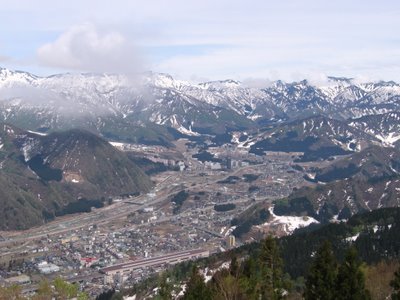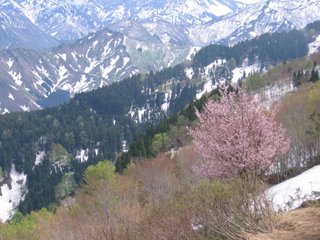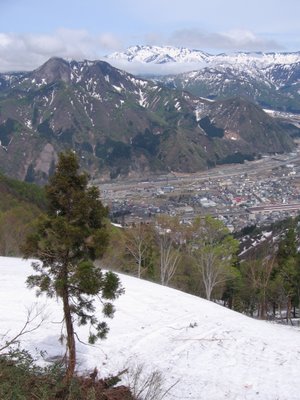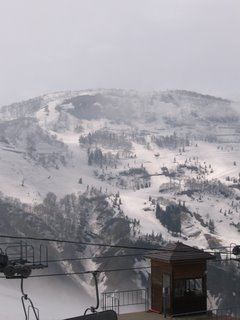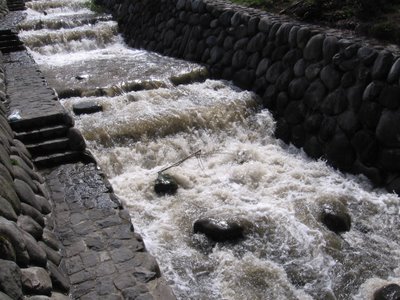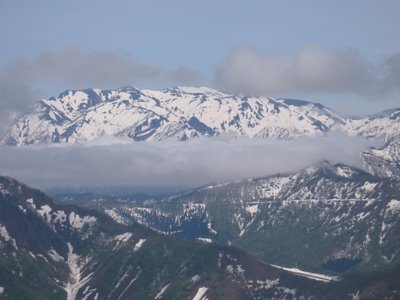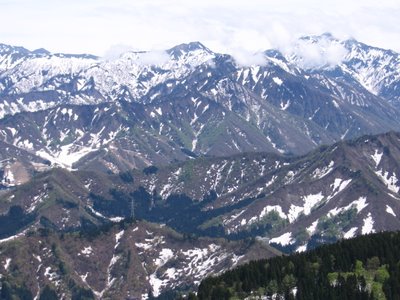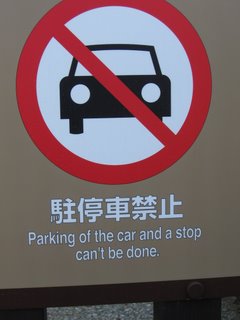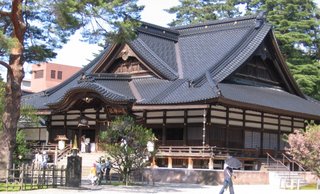Yuzawa, part 2: You Look Like You Need a Monkey
~Greetings, citizens! It's been a long, hard week over here in Nagaoka, especially since my work week is Tuesday->Saturday, so unlike the rest of you bums, I had to work today. Of course, I do get Monday off, so I can't really complain.
Today concludes my travels in Yuzawa. Before that, however, I want to share two exciting discoveries in the fields of taxonomy and cryptozoology: two newly-discovered animal species. First we have the Kipunji, a new kind of monkey discovered in the mountains of Tanzania in East Africa!
 ^ The kipunji is the first new genus of monkey discovered in 83 years. Check out that mohawk and bushy mane of fur! The monkey was first spotted over a year ago, but its verified existence as a separate monkey species has only recently been announced. The kipunji is closely related to the baboon (although its skull is very different), and communicates with a distinctive sort of honking bark. The reason that it has remained hidden for so long is that it is very reclusive, living in the treetops of high-altitude forests:
^ The kipunji is the first new genus of monkey discovered in 83 years. Check out that mohawk and bushy mane of fur! The monkey was first spotted over a year ago, but its verified existence as a separate monkey species has only recently been announced. The kipunji is closely related to the baboon (although its skull is very different), and communicates with a distinctive sort of honking bark. The reason that it has remained hidden for so long is that it is very reclusive, living in the treetops of high-altitude forests: Additionally, the Kipunji is extremely endangered: only between 500 and 1000 of these monkeys are left. The Wildlife Conservation Society has set up a fund in an attempt to protect the Kipunji from extinction.
Additionally, the Kipunji is extremely endangered: only between 500 and 1000 of these monkeys are left. The Wildlife Conservation Society has set up a fund in an attempt to protect the Kipunji from extinction.~Next, we have a grizzly-polar bear hybrid, discovered last month in Canada by a big-game hunter, who promptly shot it (that bastard!):
 ^For a polar bear and a grizzly bear to have a child is genetically possible and has been done in zoos (much like Napoleon Dynamite's liger), but until now their actual existence in the wild has been theoretical. So now the question is, what do we call it? Suggestions include a "Pizzly Bear" and "Nanulak", after the Inuit names for polar bear (nanuk) and grizzly bear (aklak). My vote goes for "Groler Bear".
^For a polar bear and a grizzly bear to have a child is genetically possible and has been done in zoos (much like Napoleon Dynamite's liger), but until now their actual existence in the wild has been theoretical. So now the question is, what do we call it? Suggestions include a "Pizzly Bear" and "Nanulak", after the Inuit names for polar bear (nanuk) and grizzly bear (aklak). My vote goes for "Groler Bear".~Getting back to Yuzawa, where I unfortunately did not encounter any groler bears:
 ^ I took this picture from the cable car on my way down the mountain. This town will be nice to visit in the summer, when Nagaoka gets very hot. I'll head up to the mountains and chill out a bit. As you can see, Yuzawa is a tourist town, dependant on massive hotels and ski resorts. They're mostly empty now, and offer very good summer rates. Here's one of the more interestingly-named hotels I found:
^ I took this picture from the cable car on my way down the mountain. This town will be nice to visit in the summer, when Nagaoka gets very hot. I'll head up to the mountains and chill out a bit. As you can see, Yuzawa is a tourist town, dependant on massive hotels and ski resorts. They're mostly empty now, and offer very good summer rates. Here's one of the more interestingly-named hotels I found: ^ I'm guessing this is where Ms. Heyl stays when she vacations.
^ I'm guessing this is where Ms. Heyl stays when she vacations. ^ More mountains hitting the cloud ceiling. I think this would be a great place to do some hang-gliding; I was actually planning on visiting a shop that gives paragliding lessons near Yuzawa, but I was unable to locate it. Maybe next time...
^ More mountains hitting the cloud ceiling. I think this would be a great place to do some hang-gliding; I was actually planning on visiting a shop that gives paragliding lessons near Yuzawa, but I was unable to locate it. Maybe next time... ^ A sign apparently warning of telephone interruptions due to construction. It wouldn't be nearly so funny if they hadn't anthropomorphized the EVIL CRANE MONSTER and the whining little telephone.
^ A sign apparently warning of telephone interruptions due to construction. It wouldn't be nearly so funny if they hadn't anthropomorphized the EVIL CRANE MONSTER and the whining little telephone.

^ An advertisement [left] for fake children's beer [right]; the idea is to get them drinking at an early age! At least the dog in the ad has the grace to look shocked.
~Okay, folks: since moving to Japan, I've seen a lot of strange things, a lot of weird stuff that just makes me stare and go, "huh?". Now, I present to you what may just be the strangest thing I've seen so far:
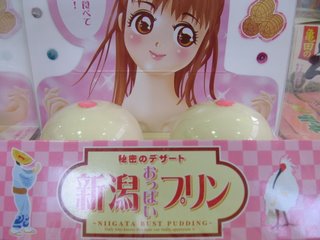 ^ The label reads, "Niigata Bust Pudding", and for once, it isn't Japanglish; it's technically correct. Disturbingly correct. A rough translation of what the girl is saying is, "Please eat gently." The friends I was with purchased two of these; I'd say I was tempted, but I'd be lying.
^ The label reads, "Niigata Bust Pudding", and for once, it isn't Japanglish; it's technically correct. Disturbingly correct. A rough translation of what the girl is saying is, "Please eat gently." The friends I was with purchased two of these; I'd say I was tempted, but I'd be lying.~And to round out the trip, here's a dose of real Japanglish, spotted at the top of the ropeway:
 ^ Luckily, the resort is human-scale, so I was able to walk up the steps and open the doors. I wonder what a non-human-scale resort looks like. Giant-scale?
^ Luckily, the resort is human-scale, so I was able to walk up the steps and open the doors. I wonder what a non-human-scale resort looks like. Giant-scale?That's a wrap for the Yuzawa trip. Stay tuned for more from David Does Japan. Oyasumi~


